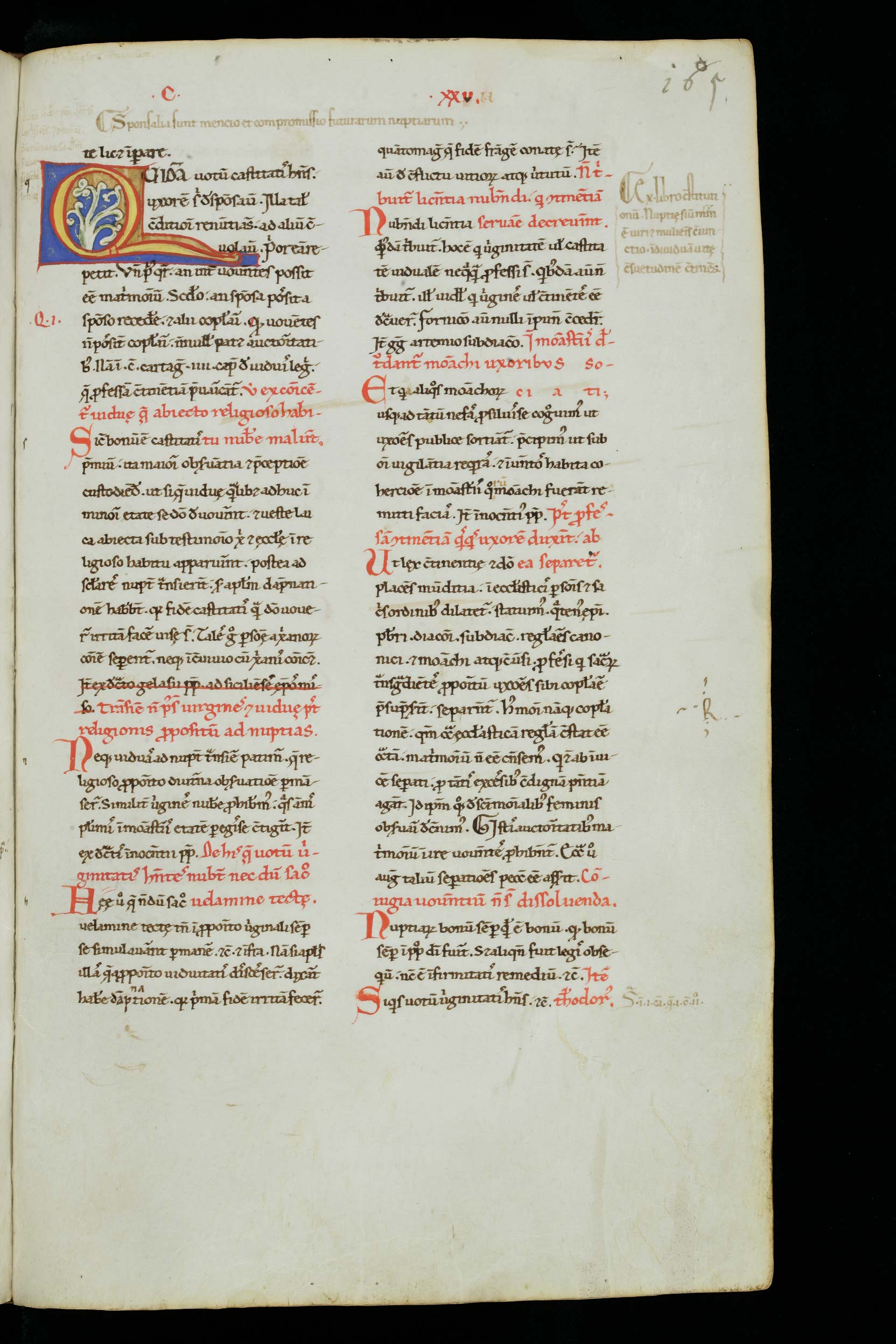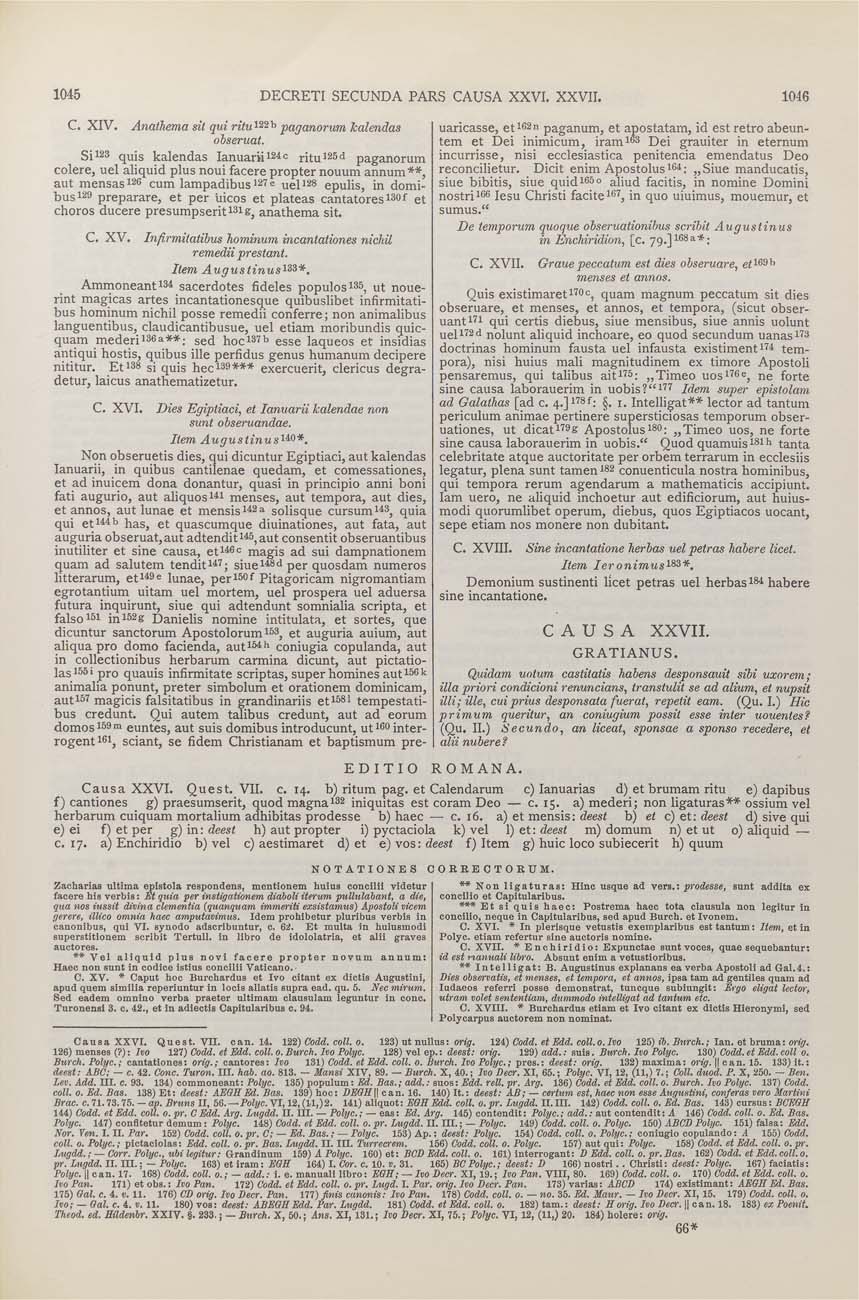
The manuscript is thought to contain a large part of the Ďfirst recensioní of Gratianís, Concordance of Discordant Canons, a later version of which became the first part of what came to be called the Corpus Iuris Canonici. The date of the work is disputed. It could be as early as the late 1120ís or as the late as the early 1140ís. Pictured is the beginning of Causa 27, the first of a series of ten hypothetical cases that deal with the law of marriage. The hypothetical case, somewhat simpler than many in the work, tells us that man who had taken a vow of chastity then espouses (desponsavit) a wife. She renounces the espousals and flees (convolavit) to another. The first man seeks to have her returned to him. Gratian then poses two questions: (1) whether those who have vowed chastity can be married? and (2) whether an espoused woman can depart from her espoused and join herself to another man? The succeeding sections seek to answer those questions by adducing authorities, which the author then analyzes.

The same text in the modern critical edition by Emil Friedberg. Corpus Iuris Canonici (Leipzig 1879, repr. Graz 1959) 1:1046 (downloaded from http://www.columbia.edu/cu/lweb/digital/collections/cul/texts/ldpd_6029936_001/pages/ldpd_6029936_001_00000581.html). It will be noted that in the ‘second recension’ the somewhat dramatic description of the behavior of the woman (‘fled to another’) is softened: ‘transferred herself to another’ (transtulit se ad alium).

The same text in the Roman edition of 1582 (downloaded from http://digital.library.ucla.edu/canonlaw/librarian?ITEMPAGE=CJC1&PAGENUM=1041). The text is the same as in the Friedberg edition, but it is accompanied with an elaborate gloss, the ‘ordinary gloss’. The gloss begins at the head, an then proceeds to lay out in the right-hand margin a brief treatise on the basic law and theology of marriage. Clearly, the Bolognese teachers of canon law did not think that their students were ready to plunge into the complexities of “A certain man who had taken a vow of chastity” without some preliminary introduction.